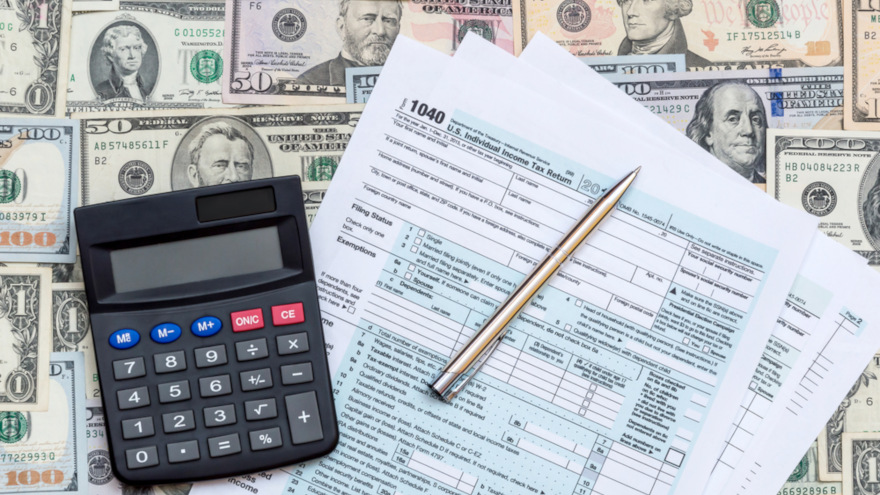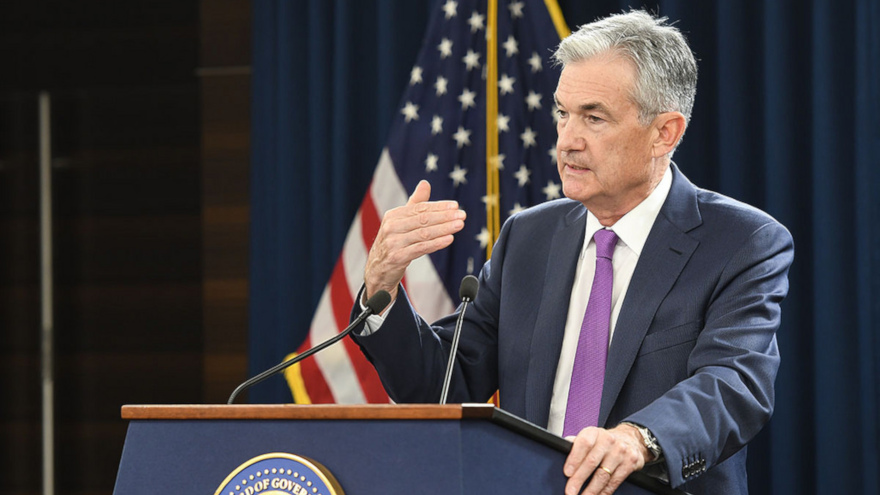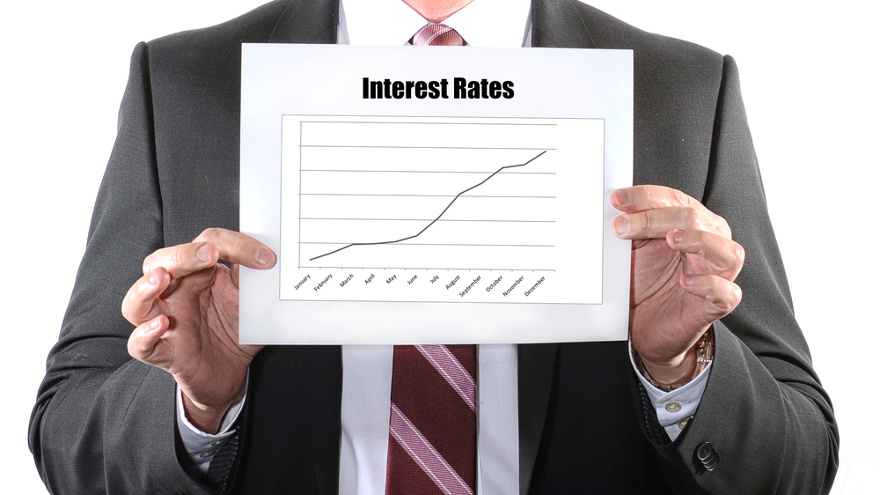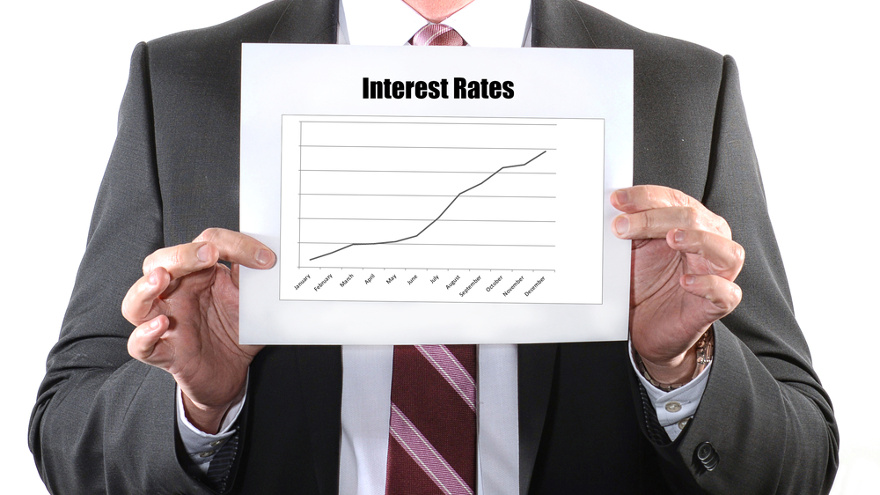As widely expected, the Federal Reserve cut the target range for the federal funds rate by 25 basis points to 2% to 2.25%, marking the first downward move by the Federal Open Market Committee (FOMC) in 11 years.
A trio of experts who view the economy through the automotive prism and share their analysis with SubPrime Auto Finance News generally approved the action by policymakers carried through by a 7-2 vote. However, this group is waiting to see what kind of material impact might develop as consumers continue to use auto financing for their vehicle purchases.
“Although expected to be down relative to 2018, U.S. light-vehicle sales remain at a fairly healthy level,” said Mike Wall, executive director of automotive analysis at IHS Markit. “Nevertheless, vehicle affordability concerns driven by rising interest rates, moderating OEM incentives and rising average transaction prices have presented headwinds for the market.
“Overall, sales have been fairly resilient, yet somewhat volatile month-to-month,” continued Wall, who was among the speakers during the recent Automotive Intelligence Summit. “The Fed’s decision to reduce interest rates by a quarter point is expected to provide a modest level of near-term relief relative to the aforementioned affordability pressures, although likely not enough to significantly alter the overall light-vehicle demand outlook for the market.”
This week’s action arrived after the Fed kept the rate steady after each of its chances to make a move earlier this year as well as lifting the rate four times in 2018.
KAR Auto Services chief economist Tom Kontos told SubPrime Auto Finance News that these rate cuts will help the economy.
“New- and used-vehicle sales and wholesale used-vehicle prices will all benefit,” Kontos said. “In fact, lower payments in a payment-driven industry like automotive are always helpful.
“I anticipate this will also help U.S. vehicle exports. Vehicle export prices will be more competitive versus vehicles produced in countries and regions that are easing their monetary policies,” he continued.
“Finally, I was comfortable with the Fed holding interest rates, but I see this as an insurance move to support continued economic growth,” he went on to say.
Cox Automotive chief economist Jonathan Smoke shared his perspectives in a blog post. Smoke, who came to the company from the real-estate space two years ago, leveraged his mortgage background to examine how the Fed’s move might influence auto financing.
“The rate policy was taken back to what it was in November when the Fed officially cut the short-term rate policy by a quarter point today. At the same time, the Fed ended their balance sheet drawdown two months early. Going forward, they will be reinvesting in bond purchases as loans and bonds are paid. This should remove any upward pressure on long term rates. However, these moves today do not necessarily mean consumers will see any lower rates on mortgages or auto loans,” Smoke wrote.
“Mortgage rates are already lower compared to last November. They may not come down more, especially if the economy seems to stabilize. But then again, those lower rates don’t seem to be spurring more home sales. The lower rates are mainly creating a boon for existing mortgage holders to refinance,” he continued.
“Auto-loan rates have more room to decline, but that will depend on lenders’ perception of risk,” Smoke went on to note. “It will take a few days to see if consumer loan rates respond to the Fed’s action and language today. It will take several weeks to see if lower rates lead to more demand.”
What the action might mean in the non-prime world
SubPrime Auto Finance News also connected with Joel Kennedy, who is the current president of the National Automotive Finance Association. Kennedy addressed this week's developments from the perspective of finance companies who cater to non-prime consumers.
"While impacts to the non-prime auto sector in the short-run are not likely to feel any major impacts from the recent rate cut, there are some longer-range impacts that could result in lower inventories of used vehicles (as a function of slowed new vehicle manufacturing taking place today), and subsequent changes to auction values as well," Kennedy said.
"Consumer demand for a higher mix of used vehicles (even into the prime segment) and the market’s willingness to cater to this demand (dealerships making a shift, and fintech providers removing friction from the used car buying process) has been strong, but a lack of supply down the road is something that we should all keep an eye on," he added.
How the Fed arrived at its move
The latest FOMC statement reiterated its primary objectives while explaining why members took this latest action.
The Fed said this cut supports the committee’s view that sustained expansion of economic activity, strong labor market conditions and inflation near the committee's symmetric 2% objective are the most likely outcomes, but uncertainties about this outlook remain.
As the committee contemplates the future path of the target range for the federal funds rate, the Fed emphasized that it will continue to monitor the implications of incoming information for the economic outlook and will act as appropriate to sustain the expansion, with a strong labor market and inflation near its symmetric 2 percent objective.
“So taking all of that on board, the committee still sees a favorable baseline outlook,” Fed chairman Jerome Powell said during the opening remarks of his press conference following the cut announcement. “Over the year, however, incoming information on global growth, trade policy uncertainty, and muted inflation have led the committee to gradually lower its assessments of the path of the policy interest rate that would best support that outlook. Today, we judge that those factors warrant the policy adjustment I described.
“As the committee contemplates the future path of the target range for the federal funds rate, it will continue to monitor the implications of incoming information for the economic outlook and will act as appropriate to sustain the expansion, with a strong labor market and inflation near its symmetric 2 percent objective,” he went on to say during the press conference that can be viewed here.
This year began with expectations the Federal Reserve would push interest rates higher multiple times. Then this week, not only did policymakers maintain the rate at its current level, experts are seeing the possibility of a rate cut before 2019 closes — perhaps because a recession might be approaching.
While not a unanimous move, members of the Federal Open Market Committee (FOMC) voted to maintain the target range for the federal funds rate at 2.25% to 2.50%. James Bullard went counter to the other nine policymakers as he looked to drop the rate by 25 basis points during the FOMC’s regularly scheduled meeting this week.
KAR Auction Services chief economist Tom Kontos agreed with the FOMC majority.
“I feel the Fed’s action, or in this case, inaction, in not raising or lowering rates is absolutely appropriate,” Kontos said in a message to SubPrime Auto Finance News. “Inflation is muted, and GDP growth rates are modest.
“This also gives the Fed additional ‘wiggle room’ if the economy was to turn South,” Kontos added.
Turning South and into a recession certainly is not what the FOMC wants, the committee explained in its rate statement. However, the Fed acknowledged that uncertainties about the current path of sustained expansion of economic activity, strong labor market conditions and inflation staying near the committee’s symmetric 2 percent objective are growing.
Chairman Jerome Powell began a press conference on Wednesday by stating, “At the Federal Open Market Committee (FOMC) meeting that concluded today, we maintained our policy interest rate, but made some significant changes to our statement. Since the beginning of the year, we have judged that our current policy stance was broadly appropriate, and that we should be patient in assessing the need for any changes. In light of increased uncertainties and muted inflation pressures, we now emphasize that the committee will closely monitor the implications of incoming information for the economic outlook and will act as appropriate to sustain the expansion, with a strong labor market and inflation near its 2 percent objective.
“While the baseline outlook remains favorable, the question is whether these uncertainties will continue to weigh on the outlook and thus call for additional monetary policy accommodation. Many FOMC participants now see that the case for somewhat more accommodative policy has strengthened,” Powell continued.
Powell also offered a glimpse of the mood inside of the FOMC’s fourth of eight regularly scheduled gatherings. The committee will assemble again at the end of July.
“Overall, our policy discussions focused on the appropriate response to the uncertain environment,” Powell said in his opening remarks on Wednesday. “The projections of appropriate policy show that many participants believe that some cut in the federal funds rate will be appropriate in the scenario that they see as most likely.
“Though some participants wrote down policy cuts and others did not, our deliberations made clear that a number of those who wrote down a flat rate path agree that the case for additional accommodation has strengthened since our May meeting. This added accommodation would support economic activity and inflation’s return to our objective,” he went on to say.
What might the Fed do during the heat of summer? Perhaps Powell shared what could be in store.
“Uncertainties surrounding the baseline outlook have clearly risen since our last meeting. It is important, however, that monetary policy not overreact to any individual data point or short-term swing in sentiment. Doing so would risk adding even more uncertainty to the outlook,” he said.
“Thus, my colleagues and I will be looking to see whether these uncertainties will continue to weigh on the outlook. And, we will use our tools as appropriate to sustain the expansion,” Powell went on to say.
It might behoove dealerships and auto finance companies to watch the Fed’s future actions as consumers are seeing higher costs to purchase a vehicle when financing is needed to complete delivery.
According to a blog post from Cox Automotive chief economist Jonathan Smoke, financing data from Dealertrack through the first portion of June showed the average rate on new-vehicle financing rose to 6.54%, up 23 basis points over May. The average used-vehicle rate moved 12 basis points higher from May to 9.96%.
“Credit is tightening for auto loans as lenders demand a higher risk spread,” Smoke wrote. “That tightening is offsetting the downward movement in market rates, so the consumer is not seeing better rates.
“Combine higher rates with higher sticker prices, less discounting and lower incentives and it is easy to understand why retail new-vehicle sales are down 4% so far this year,” he continued.
“It is even worse for subprime borrowers,” Smoke went on to say. “So far in June, the average rate on a subprime new vehicle loan is 17.93%, up more than a full point from May and more than 130 basis points from a year ago. This is why the action we are seeing in subprime year to date is in used financing and in leasing.
“The Fed often cuts rates before a recession begins, but by the time they do, it is too late to have a stimulating effect. We may be at that point in this cycle,” Smoke concluded.
Edmunds determined average interest rates for both used-vehicle and new-vehicle financing dipped to their lowest levels of 2019 in May.
Fueled in part by captives increasing the availability of zero percent financing, Edmunds found the annual percentage rate (APR) on new financed vehicles averaged 6.1% in May, compared to 6.27% in April. Edmunds previously indicated the year-high came in March at 6.36%. In February, the average APR on new financing stood at 6.26% after opening month the year registered at 6.19%.
Analysts said this latest month-over-month dip is in part due to a bump in zero percent finance deals from automakers in May. These deals constituted 5.7% of financed transactions, compared to 3.2% in April.
“Shoppers who made it to the dealership on Memorial Day weekend were lucky enough to snag some of the best deals we’ve seen all year, but that’s really not saying much,” said Jeremy Acevedo, Edmunds’ manager of industry analysis.
“Even with a slight uptick in zero percent finance offers compared to last month, average monthly payments reached record highs and interest rates still hovered above 6%. These conditions are tough on shopper wallets, no matter how you look at it,” Acevedo continued in a news release.
On the used-vehicle financing side, Edmunds noticed the average rate softened to 8.67% in May from 8.83%. Like for new models, average used-car APR also hit the year-high in March at 9.50%. In February, analysts pegged the used average at 8.95%, up from 8.88% in January.
Especially in the new-vehicle market, Edmunds analysts caution that things aren’t going to get much better for vehicle shoppers through the summer due to automakers curbing production to adjust to slumping demand.
“Now that dealers have moved a good number of old cars off their lots, shoppers might not be able to count on later summer sales events for better bargains like they have in the past,” Acevedo said.
“We’re nearing a tipping point: As prices and interest rates continue to rise, we might start seeing shoppers getting priced out of the new market altogether. And if the president’s recently proposed auto tariffs actually go into effect, this could be the case for even more consumers,” Acevedo continued.
Acevedo’s colleague at Edmunds, Jessica Caldwell, was among the industry observers reacting to President Trump’s potential actions against Mexico in this previous report published by Auto Remarketing.
New-Car Finance Data
| |
May 2019
|
May 2018
|
May 2014
|
|
Term
|
69.60
|
68.79
|
66.61
|
|
Monthly Payment
|
$559
|
$532
|
$475
|
|
Amount Financed
|
$32,510
|
$30,945
|
$27,686
|
|
APR
|
6.10
|
5.67
|
4.37
|
|
Down Payment
|
$4,235
|
$3,979
|
$3,445
|
|
Average Transaction Price
|
$36,744
|
$35,616
|
$31,760
|
Used-Car Finance Data
| |
May 2019
|
May 2018
|
May 2014
|
|
Term
|
67.35
|
67.00
|
65.02
|
|
Monthly Payment
|
$412
|
$399
|
$374
|
|
Amount Financed
|
$22,191
|
$21,689
|
$20,255
|
|
APR
|
8.67
|
8.22
|
7.49
|
|
Down Payment
|
$2,719
|
$2,627
|
$2,356
|
Source: Edmunds
May opened with a pair of economic updates that should be pleasing to dealerships and finance companies with interest rates remaining steady and unemployment declining.
The developments came in light of the Federal Reserve chairman refuting thoughts that policymakers are succumbing to political pressure from the White House or other federal lawmakers to make certain decisions regarding interest rates.
According to an announcement made on Wednesday, the Federal Open Market Committee (FOMC) decided to maintain the target range for the federal funds rate at 2.25% to 2.50%. The Fed explained its committee continues to view sustained expansion of economic activity, strong labor market conditions and inflation near the committee’s symmetric 2-percent objective as the most likely outcomes for the U.S economy.
“We’ve just come through a two-day meeting, and we’ve done a deep dive on economic and financial conditions in the United States and around the world and thought about our policy, and we do think our policy stance is appropriate right now,” Federal Reserve chairman Jerome Powell said during a news conference after Wednesday’s announcement.
“We don’t see a strong case for moving in either direction,” Powell continued. “We do, of course though, as a routine matter as you will know, we look not only at our baseline, but we also look at alternative simulations, both better and worse. And we ask ourselves what the appropriate policy response would be, but that’s all we do. And I would just say that we’re comfortable; the committee is comfortable with our current policy stance.”
Then on Friday, the Bureau of Labor Statistics reported non-farm payroll employment increased by 263,000, and the unemployment rate declined to 3.6 percent in April.
The federal agency said notable job gains occurred in professional and business services, construction, health care and social assistance during the month. Officials added the April employment gain compares with an average monthly gain of 213,000 over the prior 12 months.
Curt Long, chief economist for the National Association of Federally-Insured Credit Unions (NAFCU) issued a statement in response to the Labor Department’s April jobs report.
“As has been the case throughout the expansion, the labor market once again proves to be a bastion of support for the economy,” Long said. “The April report brought strong job growth and lower unemployment. Wage growth is comfortably above inflation, and the fact that it failed to tick up serves to stifle any talk of a rate hike.
“The Fed is in a good spot right now, as the warning signs of a recession have abated, but without any fear of economic overheating,” Long continued.
In a separate news release, NAFCU research assistant Dhruv Singh added this assertion could benefit dealerships looking to turn metal and finance companies seeking to fill portfolios.
“Consumers are still in a good position with fairly low debt levels and rising real wages, and the Fed is playing its part in backing off of plans for more rate hikes,” Singh said.
Throughout his news conference, Powell emphasized that the FOMC considers data not political posturing when making monetary policy.
“So, as you know, we are a nonpolitical institution and that means we don’t think about short-term political considerations, we don’t discuss them, and we don’t consider them in making our decisions one way or the other. And what we’re always solving for in our process, in our work, is to carry out our mission which is to extend the economic expansion, keep the labor market strong, and get inflation around 2 percent,” Powell said.
The FOMC meets again on June 18 and 19. Powell explained what happens when members gather, using the most recent meeting as an example.
“So to give you an idea of what our process is like maybe as a way of putting all that in context, so for the past maybe 10 days, all 17 FOMC members will have made extensive preparations, catching up on the latest data, reading all the memos, talking to their colleagues and their staff. We talk to literally thousands of business people and market people and people in the nonprofit sector and the educational sector just to get a better sense of the economy. We put all that together and we come together for two days,” Powell said.
“The first day begins with an economic briefing, which is sort of economic and financial developments in the United States and around the world. That takes up most of the first day and we talk about this in great detail. We go away, we think about that, and we come back and the next day we talk about monetary policy,” he continued. “And in this particular case, we came to a unanimous decision after an extensive discussion that our monetary policy stance is appropriate where it is. And we think our monetary policy stance is in a good place and we’re going to be patient as we consider adjustments.
“And we also see, by the way, the evolving risk picture as very consistent with that outlook. So we don’t feel like the data’s pushing us in either direction. Of course, we’ll not hesitate if we do feel that the data justify moving in either direction. But that’s our process. That’s how we think about things. We don’t think about other factors. We don’t let them into our decision making. We don’t discuss them,” Powell went on to say.
National Automotive Finance Association executive director Jack Tracey nicely summarized developments coming from the Federal Reserve last week. After making multiple upticks in interest rates last year, the Federal Open Market Committee (FOMC) decided to maintain the target range for the federal funds rate at 2.25 percent to 2.50 percent.
And Fed chair Jerome Powell expects those rates to remain at the current level for the remainder of the year.
“When rates are rising, it puts pressure on auto-finance company margins, so the fact they won’t be rising is a good thing for the industry,” Tracey told SubPrime Auto Finance News during a phone conversation. “The industry can focus on booking good business and keeping rates to the consumer as low as they can.”
The FOMC voted unanimously to deliver this decision to the auto-finance industry as well as the rest of the economy’s participants. Powell explained the reasoning why.
Data arriving since September suggest that growth is slowing somewhat more than expected. Financial conditions tightened considerably over the fourth quarter. While conditions have eased since then, they remain less supportive of growth than during most of 2018,” Powell said in his opening statement of a press conference that can be viewed here.
“Growth has slowed in some foreign economies, notably in Europe and China. While the U.S. economy showed little evidence of slowdown through the end of 2018, the limited data we have so far this year have been somewhat more mixed,” he continued. “Unusually strong payroll job growth in January was followed by little growth at all in February. Smoothing through these variations, average monthly job growth appears to have stepped down from last year’s strong pace, but job gains remain well above the pace necessary to provide jobs for new labor force entrants. Many other labor market indicators continue to show strength.
“Weak retail sales data for December bounced back considerably in January but on balance seem to point to somewhat slower growth in consumer spending,” Powell went on to say. “Business fixed investment also appears to be growing at a slower pace than last year. Inflation has been muted, and some indicators of longer-term inflation expectations remain at the low end of their ranges in recent years. Along with these developments, unresolved policy issues such as Brexit and the ongoing trade negotiations pose some risks to the outlook.”
During the press conference, Powell responded to an inquiry as to why the Fed adjusted its strategy that originally had a likelihood of two rate hikes this year switching to the next upward move not arriving until 2020.
“As I mentioned, the data that we’re seeing are not currently sending a signal, which suggests moving in either direction for me, which is really why we're being patient. We feel our policy rate is in the range of neutral. The economy is growing at about trend. Inflation is close to target. Unemployment is under three percent. It’s a great time for us to be patient and watch and wait and see how things evolve,” Powell said.
Discussing interest rates, terms, originations and other important parts of running an auto finance company are all on the docket for when the NAF Association hosts the Non-Prime Auto Financing Conference beginning on June 5 in Plano, Texas.
“We’re very exciting to host the event. This is our 23rd year,” Tracey said. “We have extensive coverage of fraud in this year’s program, and we also have a complete track dedicated to compliance issues. The rest of the program is very good. It covers many aspects of non-prime auto financing.”
As Tracey referenced, the popular “Fraud Friday” is back for this year’s conference. A year ago, the NAF Association placed tremendous focus about how much fraud happens in auto financing. Efforts by the association included education and awareness of the various types of fraud and the tools available to finance companies to combat fraud.
This year, the NAF Association is taking it to the next level by zeroing in on the two largest areas of concern and opportunity as indicated by its members — dealer fraud and improving contract validations using technology.
More details about “Fraud Friday” and the rest of the Non-Prime Auto Financing Conference can be found at nafassociation.com.
Whether it’s during company conference calls or coffee-shop chatter, many individuals with an interest in auto financing are keeping a close watch on this tax season, especially in light of the longest government shutdown already unfolding to begin 2019 and elected lawmakers continuing to squabble to keep agencies like the Internal Revenue Service fully functioning.
Credit Acceptance senior vice president and treasurer Doug Busk gave a frank answer even before the latest IRS data available showed how much softer this tax season already is at least in the opening stages.
Busk began his reply to an investment analyst’s question during the company’s latest conference call on Jan. 31 by saying, “I don’t think we really know.
“There’s a lot that has been written about potential delays due to the government shutdown. There’s been a lot written relative to the size of refunds versus what consumers have historically received. We don’t know what’s going to transpire so we’ll deal with it when it comes,” Busk continued.
According to the latest statistical update posted by the IRS as of Feb. 1, the tax collector has processed 13.3 million individual tax returns. That’s down by 25.8 percent year-over-year.
And as of that update, the IRS has pushed out $8.5 billion in refunds; a figure 30.3 percent lower year-over-year.
Furthermore, the IRS said the average refund for filers so far this tax season dropped below $2,000, coming 8.8 percent lower than the same juncture a year ago at $1,901.
Perhaps, an element skewing the data a bit is the fact that by law, refunds cannot be issued before Feb. 15 for tax returns that claim the Earned Income Tax Credit or the Additional Child Tax Credit. Officials said this stipulation applies to the entire refund — even the portion not associated with the EITC and ACTC.
The stage already was set for a complicated tax season long before uncertainty over whether or not the federal government will be funded and fully open for business after the stopgap action taken by President Trump and Congress expires Friday. Cox Automotive research manager Zo Rahim explained the situation after a press conference at NADA Show 2019 in San Francisco.
“We estimated that the tax withholding tables were adjusted aggressively and withholdings have adjusted by a larger percentage than the tax rate change implied. There is a fraction of the population that they could see an average refund smaller than they received previously. If they thought they were going to get the same level, they might not this year,” Rahim said.
“Consumers might have to owe more than they previously had. If you’re thinking, ‘I might get a refund,’ and it’s smaller, they might change your consumption pattern. And if you owe, and you don’t have money saved up because you thought you were getting a refund, that could have an impact on consumption,” he continued.
“We want to stress that not everyone is going to have this impact, because remember there are 100 million plus tax filers in the U.S. But even, if it’s 1 or 2 million, if that happens to them, it could have trickle impact,” Rahim went on to say.
If consumers have less money to put toward a down payment or perhaps get an account out of delinquency, those circumstances could trigger even more tightening of underwriting; a trend Rahim and the Cox Automotive team were already expecting.
“In 2015, we saw pretty loose credit, and then we saw some tightening in ’16, ’17 and the first part of ’18. But then in the second half of 2018, we saw, specifically in subprime, lenders get more aggressive,” Rahim said.
“What this means is the interest rate they were charging versus the Fed funds rate, that spread decreased, meaning they took money off the table to chase that subprime borrower and get them into a vehicle,” he continued. “We know that’s not sustainable, because you can’t sustain growth on subprime. We made that mistake once. I don’t lenders are going to make that mistake again.
Rahim went on to say, “2018 was a very weird year. I think lenders made one last effort to push as many sales as they could because the retail market is declining.”
While tax season might be full of uncertainty, the situation might be part of the reason why the Federal Reserve is not as active in 2019 as it was a year ago. Policymakers already passed on their first chance of the year to raise interest rates after increasing them four times in 2018.
The Fed meets again on March 19 and 20.
Coming into this year, we thought there maybe three hikes in 2019 after there were four in 2018. But recent stock market volatility plus some concerns about China and Europe and what oil is doing, it looks more like we’re looking more like one or two rate hikes,” Rahim said during the NADA convention in late January.
“We don’t think there is going to be a rate cut environment. Some were talking that the volatility in December means we’re going to have cuts in 2019. But if you look at the stock market now, things have rebounded. They’re starting to look better. There isn’t much that suggests that the Fed is going to be aggressively like they were in 2018. Four hikes, I think is off the table,” he went on to say.
What Comerica Bank chief economist Robert Dye projected to unfold this week came to fruition as the Federal Reserve had its first opportunity of 2019 to make an interest rate adjustment.
The Federal Open Market Committee decided to maintain the target range for the federal funds rate at 2.25 to 2.50 percent as all 10 members voted unanimously.
In its statement, the FOMC reiterated that it continues to view sustained expansion of economic activity, strong labor market conditions and inflation near the committee’s symmetric 2 percent objective.
“In light of global economic and financial developments and muted inflation pressures, the committee will be patient as it determines what future adjustments to the target range for the federal funds rate may be appropriate to support these outcomes,” the policymakers said.
Earlier this month, Dye shared a commentary that described how the Fed hinted that this outcome was likely when policymakers conducted their final gathering of 2018.
"Recent commentary by Fed chairman Jay Powell and his colleagues, and the minutes from the Federal Open Market Committee meeting of Dec. 18 and 19 shows an important but subtle change in Fedspeak. Powell has used the word ‘patient’ several times recently to describe the Fed's attitude toward more rate hikes for 2019. ‘Patient’ also shows up in the Fed minutes released this week,” Dye shared in a note released on Jan. 11.
“Recall that former Fed chairwoman Janet Yellen also used the word ‘patient’ to describe her attitude toward eventual rate hikes in early 2015,” Dye continued. “When pressed, Yellen said that being patient meant waiting a couple of meetings. Pressed further, Yellen implied that a couple meant about two.
“We should not hold Powell to a strict definition of patient or of a couple, but his choice of language appears to be purposeful,” Dye went on to say.
Powell hosted a news conference after this week’s latest policy announcement. In his prepared remarks, Powell further elaborated about how economic conditions have continued to shift since the FOMC last met.
“In addition, the case for raising rates has weakened somewhat. The traditional case for rate increases is to protect the economy from risks that arise when rates are too low for too long, particularly the risk of too-high inflation,” Powell said.
“Over the past few months, that risk appears to have diminished. Inflation readings have been muted, and the recent drop in oil prices is likely to push headline inflation lower still in coming months,” he continued. “Further, as we noted in our post-meeting statement, while survey-based measures of inflation expectations have been stable, financial market measures of inflation compensation have moved lower.
“Similarly, the risk of financial imbalances appears to have receded, as a number of indicators that showed elevated levels of financial risk appetite last fall have moved closer to historical norms,” Powell went on to say.
The Fed chair also acknowledged an array of turbulent elements that could have impact on policy decisions. Powell specifically mentioned policymakers “have seen some cross-currents and conflicting signals.”
Powell noted growth has slowed in some major foreign economies, particularly China and Europe. He described “elevated uncertainty” around several unresolved government policy issues, including Brexit, ongoing trade negotiations and the effects from the partial government shutdown in the United States.
“Times of economic uncertainty put a premium on the clarity and predictability of FOMC policy,” Powell said to close his prepared remarks. “We are committed to clearly explaining what we are doing and why we are doing it, both regarding the path of rates and also regarding management of the balance sheet.
“We believe that this transparency is how we can best contribute to macroeconomic stability,” he concluded.
Interest rates continue to increase the cost of buying a vehicle. Dealers and finance companies are well aware of concerns about affordability, consumer access to credit and softening new-vehicle sales.
Because of that, dealers and finance companies are exploring new methods to make the auto financing process more efficient to save time and money. Working to help ease concerns with that process, DealerTrack notes that the payoff and title release process is a main area in which money might slip through the cracks.
The company highlighted that its Accelerated Title product can provide the ability to reduce payoff and title release from what it says is an industry standard of 12 to 18 or more days to as few as four to six days.
Finance companies spend approximately $20 to $25 per title released on back of the title lifecycle labor costs such as overnight postage, short-pay write-offs and over-pay refunds, according to DealerTrack data. All of those costs mean a finance company that releases 40,000 annual titles incurs almost $1 million in costs. The company says outdated tools, manual procedures and slow workflows are the reason for those costs. How can lenders and dealers overcome those costs? By working closely with their third-party technology providers to build partnerships, make more of their processes digital and make workflows connect better for greater accuracy and speed.
Obtaining a payoff quote, handwriting and mailing checks overnight, and then waiting for delivery of title is a time-intensive process. The undesirable result? It can often mean incorrect payoffs, delays in title receipt and high processing costs. DealerTrack notes that its Accelerated Title product can effectively speed up the funding “lifecycle” by as much as 70 percent.
“There is a lot of value to be gained by improving vehicle payoff and title release process,” Cheryl Miller, senior vice president and general manager for Dealertrack F&I and Registration and Titling Solutions, said in a news release. “Through Dealertrack Accelerated Title, we’re working to cut inefficiencies and deliver an integrated workflow between dealer and lender that increases transparency and consistency for a faster, streamlined title release process.”
Dealertrack notes that Accelerated Title is one of its lender products that help lenders improve efficiency while strengthening dealer relationships. Accelerated Title features more than 40 lenders, which the company notes gives dealers more control over their transactions.
Dealertrack states that the fully electronic process can provide finance companies with title tracking and reporting 24 hours per day, seven days a week.
As the Federal Reserve mulls interest-rate decisions for 2019, Edmunds explained that December’s auto finance data reinforced how 2018 represented a “tipping point.”
Analysts indicated interest rates for new vehicles dipped slightly for a second consecutive month in December. But for used vehicles, the exact opposite happened as the rate jumped a full percentage point year-over-year.
The annual percentage rate (APR) on new vehicles financed during the closing month of the year averaged 5.9 percent in December, compared to 6.0 percent in November and 6.2 percent in October.
For used-vehicle financing, Edmunds indicated the average APR climbed from 7.66 percent to 8.66 percent as the average amount financed topped $22,000.
Edmunds noted that low interest rate finance deals on the new-car side can be attributed to this overall month-over-month dip. According to Edmunds data, 14 percent of buyers received rates below a 2-percent APR, compared to 12 percent of buyers receiving the same rates in November.
“Holiday sales gifted car shoppers with another slight respite from record high interest rates in December, but in many ways this month was a curtain call for robust finance deals,” said Jeremy Acevedo, Edmunds’ manager of industry analysis.
“With the holidays behind us and the most recent Fed rate hike kicking into effect, automakers won’t be as inclined to move mountains in the new year, so shoppers can expect average APRs above 6 percent to be the new normal,” Acevedo continued.
Edmunds noted that reliable incentives such as zero percent finance deals have all but dried up, threatening to derail industry sales in 2019. According to Edmunds data, zero percent finance loans remained flat month-over-month, but at 5.5 percent hit their lowest December level since 2005.
Also of note from the new-car perspective, ALG estimated average transaction prices (ATP) for a new light vehicle was $35,145 in December, up 1.3 percent from a year ago. ALG added average incentive spending per unit declined by $223 to $3,746. The ratio of incentive spending to ATP is expected to be 10.7 percent, down from 11.4 percent from a year ago.
While the rate movements on the new-model side might be more active, Edmunds also pointed out that the average APR for used-vehicle financing climbed only 16 basis points between December 2013 and December 2017.
No matter what happens within the dealership finance offices and finance company underwriting departments, how the Federal Reserve operates in 2019 will be an overarching influencer. Policymakers have moved interest rates higher more than a half dozen times during the past 24 months.
But at least one member of the Federal Open Market Committee thinks it might be time for the Fed to get to he defined as a “neutral rate.” Robert Kaplan is president of the Federal Reserve Bank of Dallas.
Kaplan explained back in October that the neutral rate is the theoretical federal funds rate at which the stance of Federal Reserve monetary policy is neither accommodative nor restrictive.
At the time of his analysis with the U.S. unemployment rate at approximately 3.7 percent and the headline personal consumption expenditures (PCE) rate of inflation at slightly more than 2 percent, Kaplan stressed that, “I believe that the Federal Reserve is achieving its dual-mandate objectives.”
He continued, “As we reach our dual-mandate objectives, I believe that the Federal Reserve should be gradually easing off the accelerator — we no longer need to be stimulating the U.S. economy. As such, I believe we should be gradually and patiently moving toward a neutral policy stance.”
The Fed meets again beginning on Jan. 29, giving the auto finance industry the first glimpse of the year to see if policymakers will follow Kaplan’s suggested course.
“Rising interest rates will be one of the biggest factors influencing how the auto market fares in 2019,” Acevedo said. “Access to cheap credit has been a staple of the post-recession auto market, and 2018 marked a tipping point for the industry.
“Interest rates in 2018 closed more than a point higher than they closed 2017, and rates are only going to continue to trend upward, which poses a real threat to shopper demand as we head into 2019,” he went on to say.
New-Car Finance Data
|
|
December 2018
|
December 2017
|
December 2013
|
|
Term
|
68.41
|
68.99
|
65.18
|
|
Monthly Payment
|
$558
|
$536
|
$487
|
|
Amount Financed
|
$32,056
|
$32,080
|
$28,032
|
|
APR
|
5.87
|
4.73
|
4.05
|
|
Down Payment
|
$4,487
|
$4,056
|
$3,941
|
Used-Car Finance Data
|
|
December 2018
|
December 2017
|
December 2013
|
|
Term
|
67.22
|
66.89
|
64.54
|
|
Monthly Payment
|
$413
|
$392
|
$371
|
|
Amount Financed
|
$22,207
|
$21,613
|
$19,956
|
|
APR
|
8.66
|
7.66
|
7.50
|
|
Down Payment
|
$2,683
|
$2,488
|
$2,281
|
Source: Edmunds
There’s no doubt about the Federal Reserve’s decision revealed this week to leave interest rates as they are at least for the time being.
By a unanimous vote, the Federal Open Market Committee decided to maintain the target range for the federal funds rate at 2 to 2.25 percent.
Policymakers have one more chance this year to adjust interest rates. Their next announcement will arrive on Dec. 19.
The Fed’s actions already are leaving their mark on auto financing. Earlier this month, Edmunds pointed out the average annual percentage rate for new-model deliveries in October rose to the highest level on record since January 2009.
Despite some vehicle buyers getting pinched a little more when they have to finance, committee members are confident in their latest moves as reinforced by their solidarity in approving the holding of the current rate.
“Information received since we met in September indicates that the labor market has continued to strengthen and that economic activity has been rising at a strong rate,” the committee said in a news released.
“Job gains have been strong, on average, in recent months, and the unemployment rate has declined. Household spending has continued to grow strongly, while growth of business fixed investment has moderated from its rapid pace earlier in the year,” policymakers continued.
“On a 12-month basis, both overall inflation and inflation for items other than food and energy remain near 2 percent. Indicators of longer-term inflation expectations are little changed, on balance,” they added.
Consistent with its statutory mandate, committee members reiterated that they seek to foster maximum employment and price stability.
“The committee expects that further gradual increases in the target range for the federal funds rate will be consistent with sustained expansion of economic activity, strong labor market conditions, and inflation near the committee's symmetric 2 percent objective over the medium term. Risks to the economic outlook appear roughly balanced,” members said.
“In determining the timing and size of future adjustments to the target range for the federal funds rate, the committee will assess realized and expected economic conditions relative to its maximum employment objective and its symmetric 2 percent inflation objective,” they continued.
“This assessment will take into account a wide range of information, including measures of labor market conditions, indicators of inflation pressures and inflation expectations and readings on financial and international developments,” policymakers concluded.












